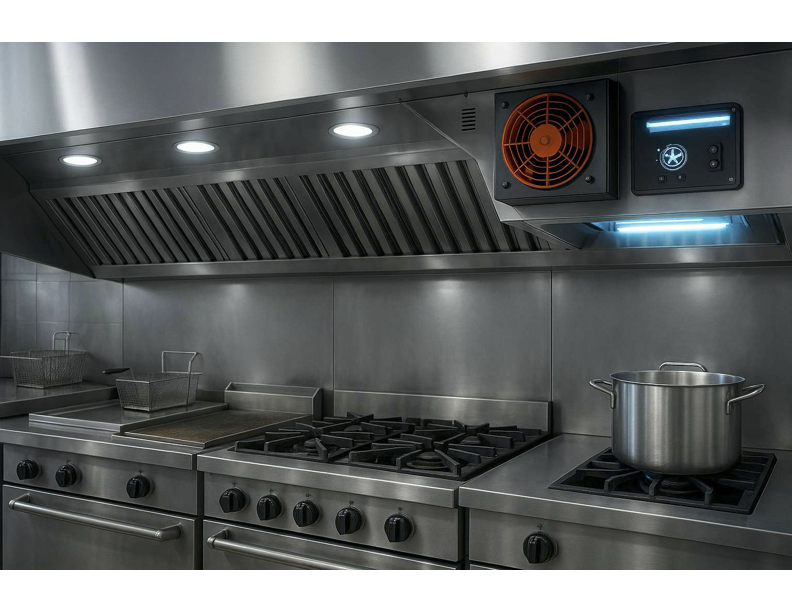If you run a restaurant or manage a commercial kitchen, you know ventilation isn’t just a box to check—it’s critical. It keeps your kitchen safe, your staff comfortable, and your air clean. And as kitchens get hotter, smarter, and more sustainable, ventilation systems are evolving fast to keep up.
Here’s what’s new—and what matters—in today’s commercial kitchen ventilation systems.
1. Smart Ventilation Is the New Standard
Modern hoods aren’t just sucking out smoke—they’re thinking. Smart ventilation systems now use sensors and real-time analytics to monitor heat, smoke, and airborne grease. When demand spikes, airflow ramps up. During downtime, it dials back. This demand-controlled ventilation (DCV) reduces energy use by up to 50% compared to traditional setups.
Why it matters:
You cut energy costs, extend equipment life, and lower your carbon footprint—all without sacrificing performance.
2. UV-C and Ozone-Based Systems Are Redefining Grease Management
Old-school grease filters catch the bulk of airborne grease, but they’re messy, high-maintenance, and not 100% effective. Enter UV-C lighting and ozone injection. These systems break down grease particles at the molecular level before they hit the ductwork, reducing fire risk and cleaning needs.
Why it matters:
Less grease buildup means safer kitchens, cleaner exhaust ducts, and fewer costly cleanings or shutdowns.
3. Modular Hoods and Customizable Systems
Every kitchen layout is different. Today’s ventilation manufacturers are embracing modular designs that can be mixed, matched, and tailored to fit unusual or space-constrained setups. Some systems can even be reconfigured as your menu—or your footprint—evolves.
Why it matters:
You’re not locked into a one-size-fits-all solution. You get exactly what your kitchen needs, and you can adapt as things change.
4. Integrated Fire Suppression Is Getting Smarter
Most kitchens already use fire suppression systems. But new models are integrating more tightly with ventilation—triggering suppression based on sensor data, not just temperature spikes. Some systems can even alert you before a fire risk escalates.
Why it matters:
Proactive protection reduces risk and downtime, and ensures compliance with tighter safety codes.
5. Noise Reduction for Open Kitchens
As open kitchens become the norm in fast-casual and upscale dining, the noise level of ventilation systems is under new scrutiny. Manufacturers are now offering ultra-quiet fans, sound-dampening ductwork, and better baffling designs that maintain airflow without overpowering the dining experience.
Why it matters:
You keep the ambiance intact while keeping the air clean—no compromises.
6. Sustainability and Code Compliance
With stricter environmental regulations and local energy codes, staying compliant isn’t optional. High-efficiency motors, energy recovery systems, and even solar-assisted ventilation setups are entering the market to meet demand from green building initiatives.
Why it matters:
Eco-friendly kitchens aren’t just good PR—they’re often tied to incentives, rebates, and long-term cost savings.
Bottom Line
The days of loud, greasy, energy-hungry kitchen hoods are numbered. Today’s commercial kitchen ventilation systems are smarter, safer, cleaner, and more efficient than ever. Whether you're planning a new build or upgrading an existing setup, investing in the latest tech isn’t just about compliance—it’s about performance, savings, and future-proofing your operation.

